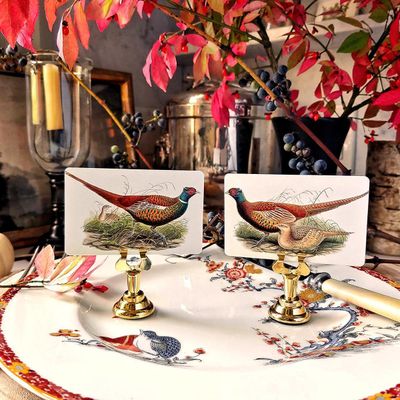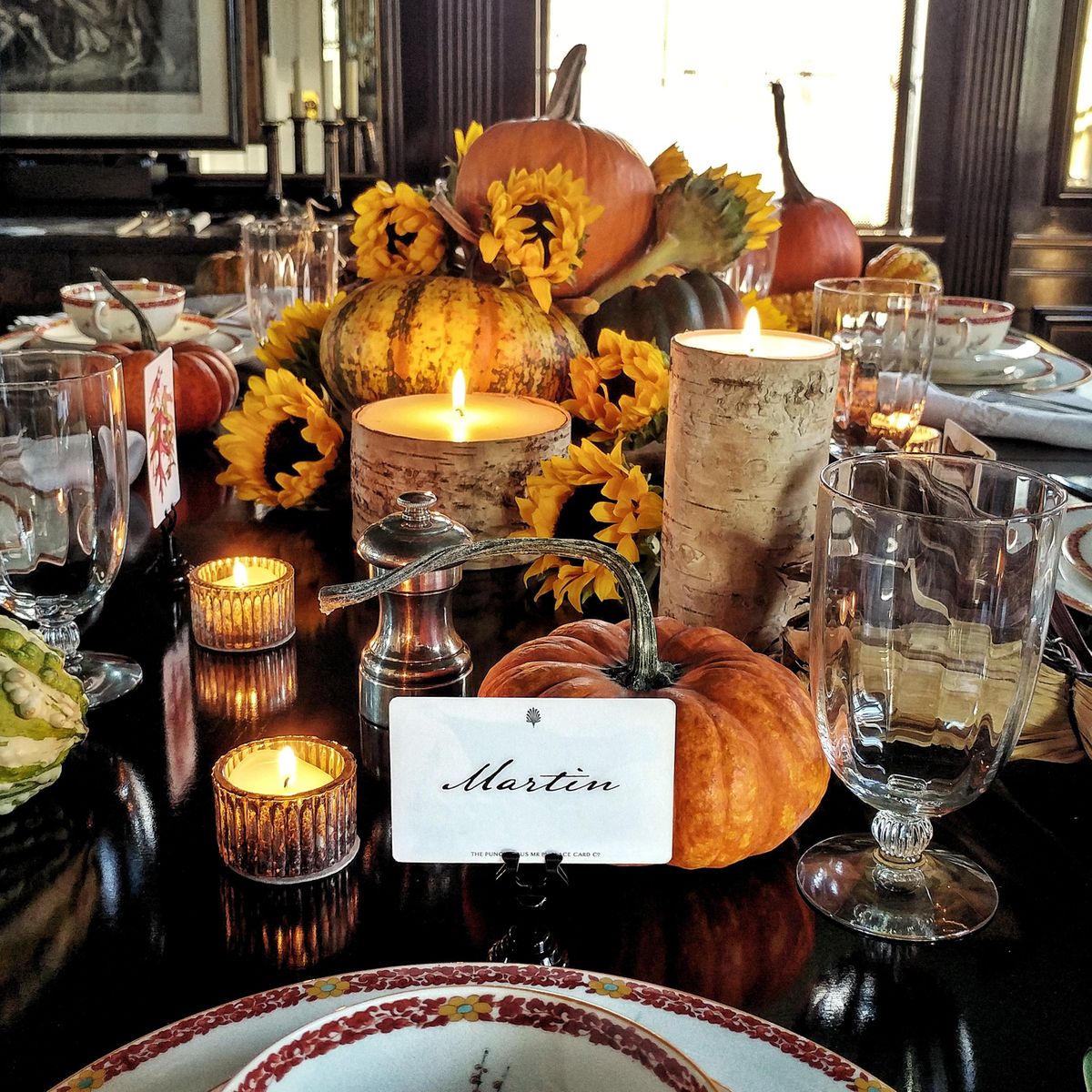Five old-school table accessories to revive for the holidays

At one time, baby boomers may have loved hauling out their French rimmed soup plates and polishing their sterling salt-and-pepper shakers, but many of these accessories have moved into the aftermarket. You’ll find tons of entertaining stuff on Etsy and eBay and at estate sales and thrift shops.
But some old-school basics are being brought back, even reinvented, to grab the attention of a younger, hipper crowd looking for fun – not fussy – accessories. Here are some fresh ideas to toast the holidays using entertaining throwbacks.
Place mats
Embroidered linen and cotton place mats are not seen on the tables of most Americans these days. They evoke a fussy, grandmotherly look and are in constant need of washing and ironing. Yet place mats are a nice way to frame individual settings at a table.
Sandy Chilewich, creative director of the company that bears her name, has offered an easy-care option for 19 years with her wipe-clean woven vinyl place mats. Her new line of mats pairs the modern textile with designer John Derian’s evocative vintage botanical and historical motifs including cabbage roses, hummingbirds and ferns.
“John Derian’s imagery is so romantic,” Chilewich says. “Putting it with our textiles is a juxtaposition of old and new.”

Place cards
Although cards engraved with guests’ names are associated with formal gatherings such as weddings or diplomatic dinners, they don’t have to be fussy. Karen Suen-Cooper and Martin Cooper love using place cards when setting the table for a dinner with friends.
“They always spark a smile,” Suen-Cooper says. “It’s not something everyone uses in the age of paper plates.” They realized, however, that the plain white cards they were using “seemed so blank and boring,” Suen-Cooper says. So the couple, who both come from the fashion world and live in New York’s Hudson Valley, launched Punctilious Mr. P’s Place Card Co.
They produce a line of seasonal place cards featuring traditional European or Chinese illustrations. For November and December, they offer pheasants, reindeer, mushrooms and mid-century Christmas tree baubles. The cards come with custom digital calligraphy and can arrive with your guests’ names already inscribed if you like.
“We encourage people to take our place cards home as a souvenir,” Suen-Cooper says. “In a digital world, everything goes into the ether. You can tuck this into a mirror and create a collage of experiences. It’s a memento of a fantastic time you had with your friends.”
Punch bowls
In New England, the Christmas punch bowls came out at the annual boozy Tom & Jerry party featuring warm milk punch laced with dark rum or brandy. In the South, huge cut crystal bowls were regulars at wedding showers or Easter open houses filled with sugary concoctions chilled by ice rings.
Vintage punch bowls are not often seen partying these days. Instead, they’re languishing in basements or thrift shops. But in researching her new book “Entertaining at Home: Inspiration From Celebrated Hosts,” author Ronda Carman writes about Christy Ford, whose family in Charlottesville has given punch a new spin.
At an annual mother-daughter holiday tea, a mixture of orange juice, cranberry juice and champagne is ladled from a tall punch bowl into elegant champagne flutes rather than the usual small cups. It makes for a more festive, fizzier experience.
“The appeal of a punch bowl is that it’s a way to make a beverage ahead of time,” Carman says. “Then people can help themselves, and you don’t have to be fussing around making drinks for people.”
There are plenty of modern options for punch bowls. Carman likes the Oregon punch bowl ($99.95 at Crate & Barrel for a 10-piece set), the Schott Zwiesel Tritan Pure Punch Bowl ($129.99 at Bed Bath & Beyond) and the Octopus Bowl ($169.95 at Z Gallerie).
Decanters
Most glass decanters or carafes were originally made for holding liquor or wine. You could pour red wine into a carafe so the flavor would open up by being exposed to oxygen. Scotch was kept in a heavy cut crystal decanter with a stopper on top a la “Mad Men.”
As more relaxed lifestyles came into vogue (and day drinking diminished), many decanters were shoved into the back of cabinets or donated to thrift shops. But the truth is that many of them are really good-looking and are fun to pull out for a special occasion if not more often.
For Marian McEvoy, former editor of Elle Decor and House Beautiful and now a Hudson Valley artisan, dinners are a bottle-free zone. She says decanters unify things.
“Everything I put on my table goes into a decanter, carafe or pitcher, and that includes wine, water and Gatorade,” she says. And, yes, she puts all of those things into the dishwasher without worrying. “People don’t know how to use decanters today, so you can pick them up for nothing.”
“Wine served in a carafe,” she says. “How gorgeous is that?” She likes the Hotel Collection Glass Decanter ($67 at Macy’s), Brew to a Tea’s Wine Decanter With Stopper ($23.99 on Amazon) and Lily’s Home’s Unbreakable Indoor/Outdoor Pitcher and Wine Decanter ($17.95 on Amazon).
Candlesticks
Votive candles have been in vogue for a while now. Maybe it’s time to bring back the classic charm of tall white tapers in classic holders. “I always keep my dining room light dimmers pretty low and use lots of candles,” McEvoy says. “It makes everyone look better.” She stockpiles boxes of Ashland unscented white taper candles ($7.99 for 15 at Michaels) so she never runs out.
McEvoy keeps her eyes open for old wood candlesticks at tag sales and thrift shops, then paints them white with black outlines. “It unifies them and makes them look architectural. Some are tall and some are short, some are midcentury and some are 19th century,” she says. “It’s nice to see the mix of shapes on a table.”